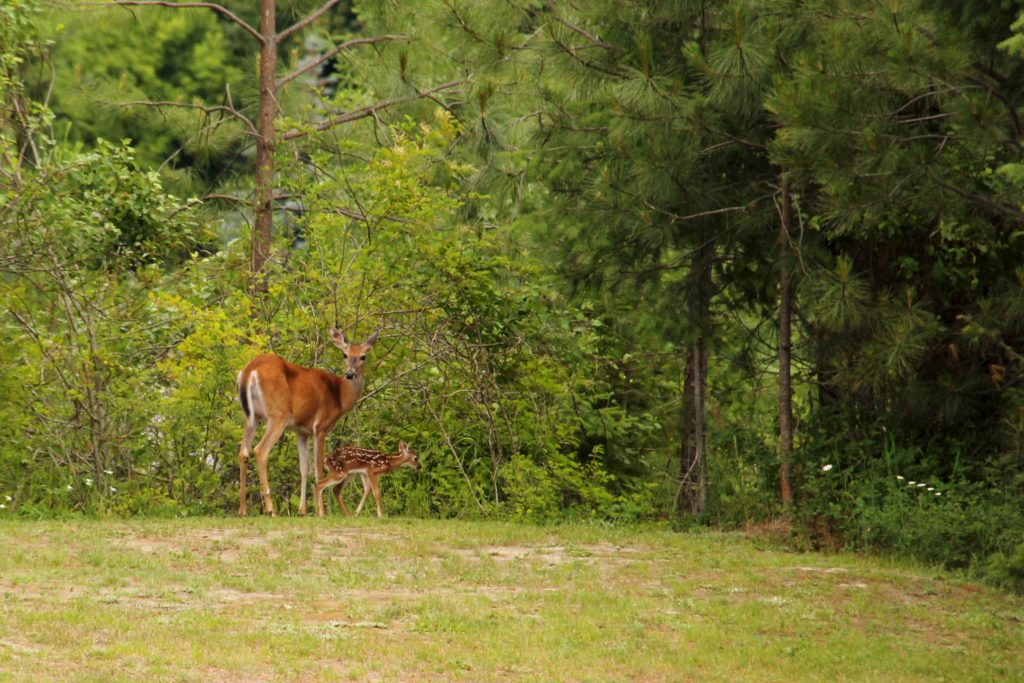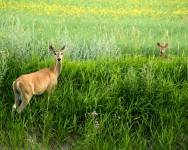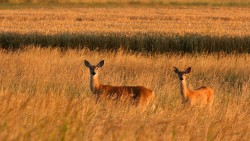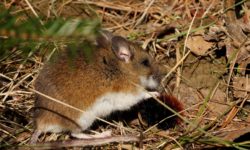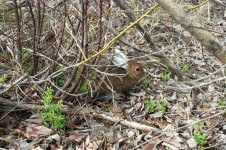My three-year-old daughter said she was going to “hike” around the outside of the garden fence while I worked on the inside. A few seconds later she let out a terrifying scream! I quickly looked over as she was attempting to climb the deer fence but I couldn’t see anything around her. I rushed over to her and saw the reason for the panic—a fawn curled up in the tall grass next to the fence.
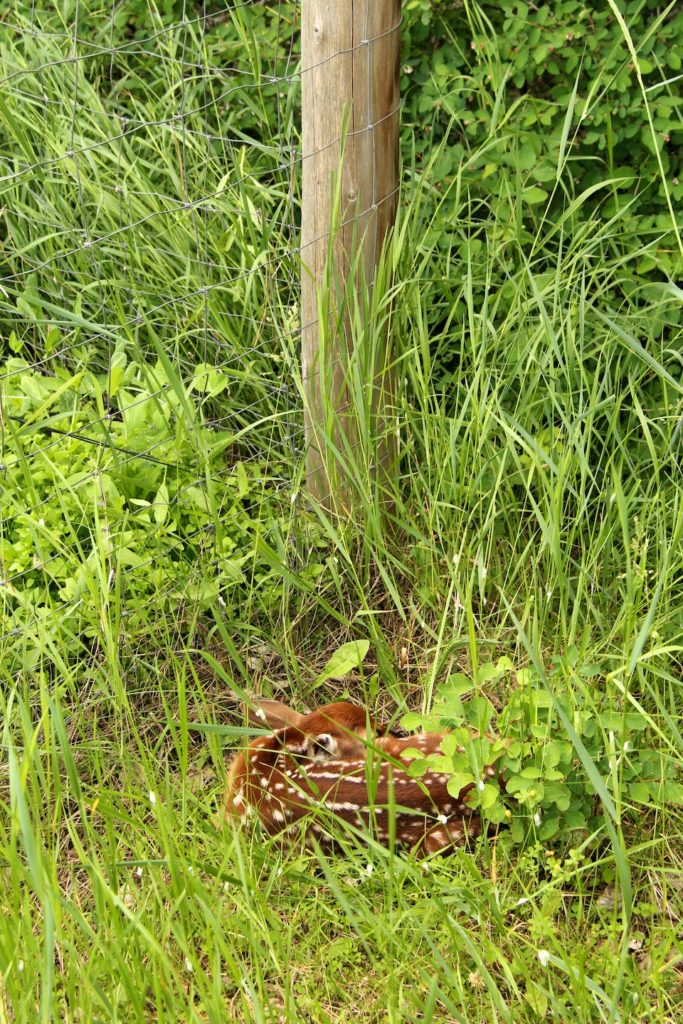
During all the commotion, the fawn never moved or even flinched. That motionless state is one of the fawn’s behavioral adaptations to survive.
Once fawns are born, they are not nimble enough to accompany their mother or run away from danger. So for the first two to three weeks, they curl up and hide while their mother is away. The doe returns at intervals to feed the fawn and move the fawn to a different location. Otherwise, the doe remains at a distance to avoid attracting predators to the fawn.
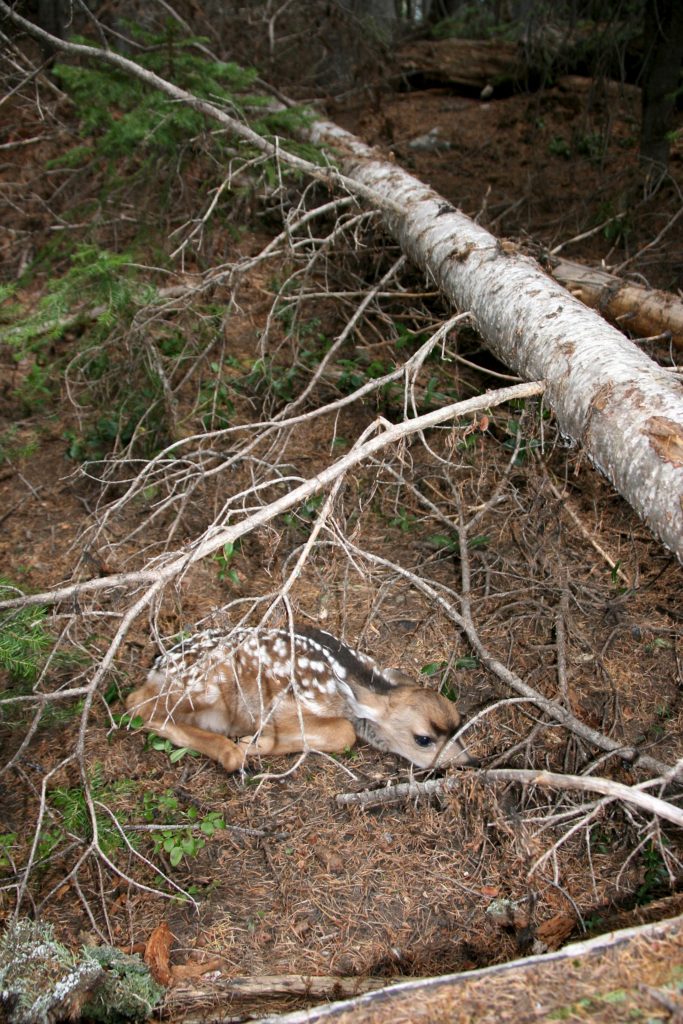
How does a fawn hide
A motionless animal is an easy meal for a predator but fawns have other strategies to stay undetected.
- Motionless. Movement attracts predators, so fawns stay completely still. They hide curled up, belly down with their head close to the ground.
- Spotted coat. When laying in the grass, the spots provide camouflage by looking like dappled sunlight on the forest floor.
- Lack of scent. Many predators can find prey by smell but fawns lack a scent almost entirely. The exception are black bears who have an incredible sense of smell and can smell milk curdling inside the fawn’s stomach.
When fawns are born in May and June, their mothers hide them. The doe is typically nearby either feeding or resting. Does have extremely strong parenting instincts and will not abandon a fawn.
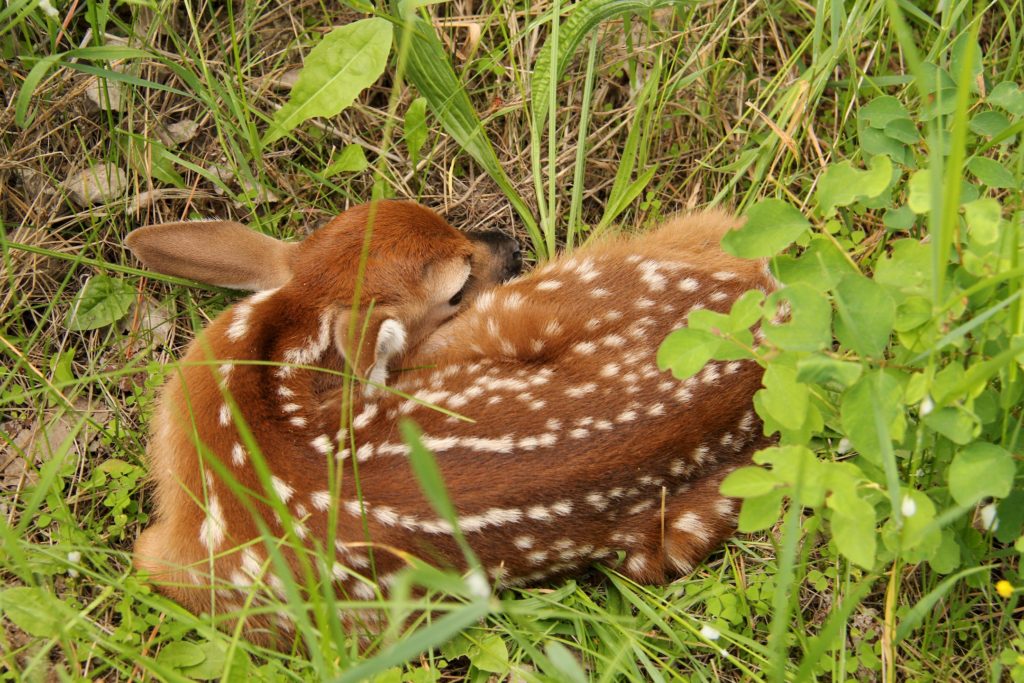
What to do if you find a fawn
- If you find a fawn curled up, leave it! The fawn is doing exactly what it is suppose to do–HIDE. If the fawn is moved by somebody, the doe will search for the fawn though.
- Watch the fawn from a distance. Keep your distance so the mother feels comfortable coming back to her fawn. The mother will come back to feed the fawn periodically or to move the fawn.
- If the fawn is bleating, bleeding or lying on its side, call Idaho Fish and Game (or your state’s wildlife department) for help and they will advise you what to do.
In the case of the fawn by my garden fence, I quickly took pictures and we stayed out of the garden for the rest of the day. Later in the evening, the doe came and guided the fawn over the hill to another spot.
